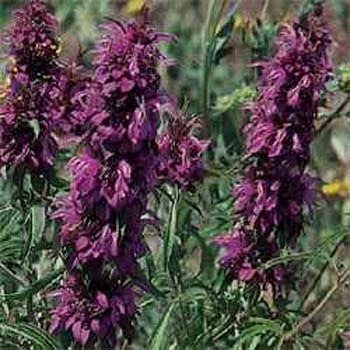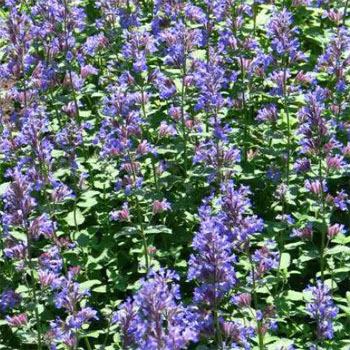New Account | Seed Mix |
Gift Certificates |AAS Winners |
Gardening Products
SEEDS: Unusual | Annuals | Perennials | Vegetables | Herbs | Trees
Lemon Mint Seeds
This plant has many uses including: Bedding plant, cottage gardens, herb gardens, native plant areas, prairies, roadsides or waste areas. Also effective in hummingbird or butterfly gardens. Leaves may be used to make herbal teas or may be added to pot-pourris.
Useful gardening information
Sow seeds directly in prepared areas in the spring when temperatures begin to warm.Spread the herb seeds evenly and rake into loose topsoil. Supplemental watering is suggested if spring rains are poor. Provide additional water until the plants reach 10 - 12 inches tall. Once established, Lemon Mint should re-seed itself. Allow flower seeds to mature completely before mowing or cutting down. Since it's an annual, it is essential that the plant is allowed to re-seed itself for the following year.

HR167 Lemon Mint ( Monarda citriodora )
A wonderful annual that attracts beneficial insects. Monarda Citriodora is commonly called Lemon Bee Balm, Lemon Mint, and Purple Horsemint. As the name suggests, it is an herb in the mint family. Lavender-to-pink, tuft-like, whorled flower heads attract hummingbirds, bees and butterflies. The Lemon Mint herb plant blooms from spring into late summer. Often late in the season the scent is described as resembling oregano more than lemon. Plants will grow about 36" tall.

2256 Wild Bergamot ( Monarda fistulosa )
Also known as Wild Bergamot this perennial is an upright growing plant which spreads out. It has a lovely lavender blossom and distinctively aromatic foliage. Its sweet nectar is a favorite of butterflies, bees and hummingbirds.
Sometimes called Mint Leaf Bee Balm, this native to eastern North America and the plains, and it is easy to grow from seeds and it multiplies quickly.
It can be found naturally along riverbanks and enjoys this rich, organic, moist soil. However, it will grow in average soil as well. Full sun is best, but light shade is tolerated. Plants tend to spread more quickly in the shade. Most Monarda herbs multiply rapidly either by underground stems or freely sowing their own flower seed. In order to keep plants healthy and vigorous, they should be divided at least every three years in the spring. Deadheading spent blooms will prolong the bloom time.
Sometimes called Mint Leaf Bee Balm, this native to eastern North America and the plains, and it is easy to grow from seeds and it multiplies quickly.
It can be found naturally along riverbanks and enjoys this rich, organic, moist soil. However, it will grow in average soil as well. Full sun is best, but light shade is tolerated. Plants tend to spread more quickly in the shade. Most Monarda herbs multiply rapidly either by underground stems or freely sowing their own flower seed. In order to keep plants healthy and vigorous, they should be divided at least every three years in the spring. Deadheading spent blooms will prolong the bloom time.

3481 Lemon Catnip ( Nepeta cataria citriodora )
Lemon Catnip is a subspecies of the common catnip, the attraction to cats is the same. The difference lies, not only in the lemon scent but also the appearance. The plants are a bit smaller than common catnip and the foliage is a soft green rather than gray green. Tastes great in teas and has the same mild sedative effect. Blue blooms in summer attract honeybees.
Growing Lemon Catnip is a wonderful way to bring a lemony scent to your landscape or garden, and it's a reliable plant giving years of pleasure. Start these flower seeds indoors in late winter for transplanting out after frosts have passed.
A perennial best suited for zones 4-9.
Growing Lemon Catnip is a wonderful way to bring a lemony scent to your landscape or garden, and it's a reliable plant giving years of pleasure. Start these flower seeds indoors in late winter for transplanting out after frosts have passed.
A perennial best suited for zones 4-9.
Share a growing tip or recipe and help other gardeners!
Click on the Contact Form link, place "Tip" in the name line and fill in your information. If we accept your Lemon Mint growing tip or recipe, we will post it on this page.
